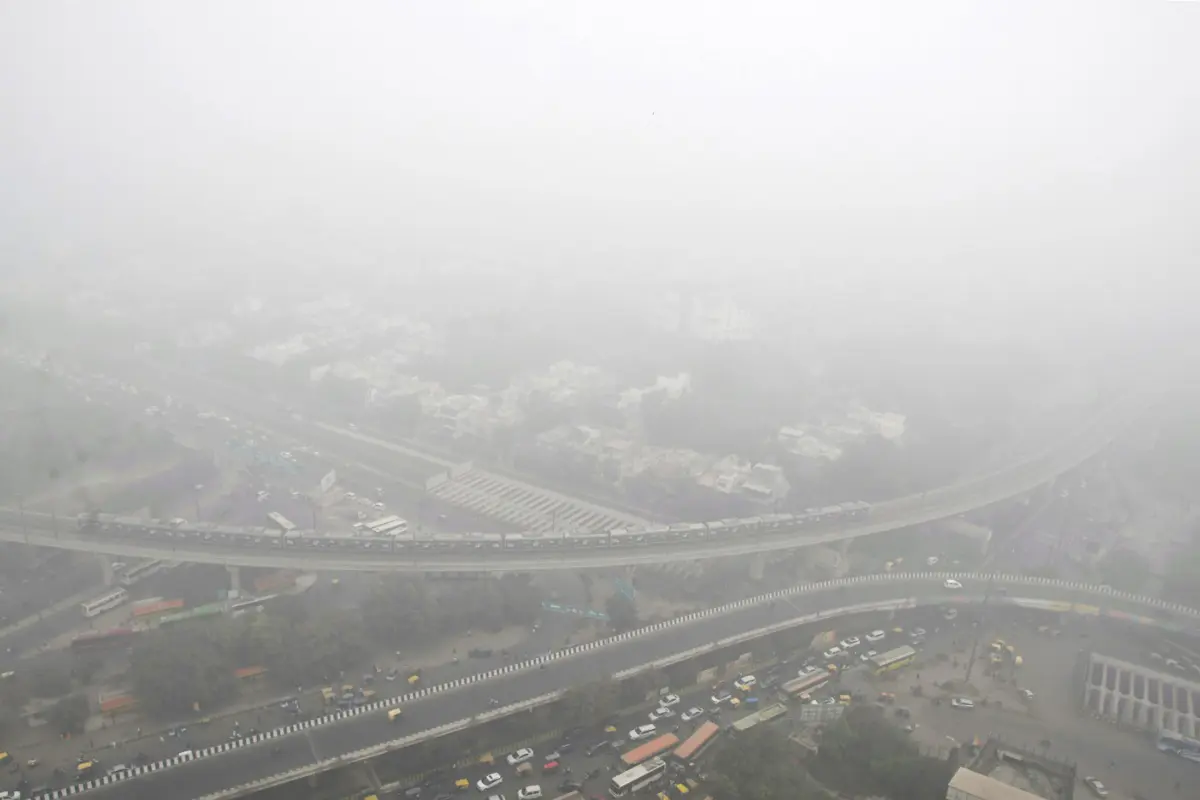
The air quality across Delhi, Noida, Ghaziabad, and Gurugram deteriorated to hazardous levels on Tuesday morning, with the Air Quality Index (AQI) soaring to 500, signaling ‘severe plus’ conditions. This marks the seventh consecutive day that the National Capital Region (NCR) has been engulfed in heavy smog, prompting growing concerns about public health risks.
Toxic Air Quality Reaches Alarmingly High Levels
Data from the Central Pollution Control Board (CPCB) revealed that several areas in Delhi, including Anand Vihar, Ashok Vihar, Bawana, Jahangirpuri, and Major Dhyan Chand Stadium, recorded AQI levels of 500 by 5 a.m. This reflects the alarming severity of the air pollution crisis in the region. An AQI reading of 500 is the highest possible level, indicating a significant health emergency.
Experts attribute the worsening air quality to a combination of adverse weather conditions, including low wind speeds, and ongoing stubble burning in neighbouring states, which has significantly contributed to the pollution levels. These factors have created a dangerous haze over the region, severely impacting air quality.
Delhi Government Declares Medical Emergency, Shifts to Online Education
In response to the worsening air quality, the Delhi government has called the situation a “medical emergency” and urged immediate action to protect public health. Several institutions across the NCR have switched to online classes, suspending in-person attendance for students in Classes 10 and 12 until further notice. Schools and colleges in other parts of the region are also shifting to virtual learning to avoid exposing students to toxic air.
Also Read: Delhi HC Seeks CBI’s Response On Chidambaram’s Plea For Document Inspection In INX Media Case
Delhi University and Jawaharlal Nehru University (JNU) have decided to hold online classes until November 22, prioritizing the health and safety of students and staff. The decision comes in light of the ongoing pollution crisis and the escalating AQI levels in the city.
Supreme Court Orders Strict Anti-Pollution Measures
As the air quality continues to worsen, the Supreme Court intervened, issuing a directive to all states in the Delhi-NCR region. The Court ordered the immediate establishment of enforcement teams to implement the highest level of the anti-pollution Graded Response Action Plan (GRAP), Stage 4, which is triggered in cases of extreme pollution.
The court also emphasized the constitutional obligation of states to ensure a clean and safe environment for all citizens, warning that the restrictions would remain in effect until further notice. The GRAP Stage 4 restrictions, now in force, include the following key measures:
– Truck Restrictions: Only trucks carrying essential goods or using clean fuel (LNG, CNG, BS-VI diesel, or electric) are allowed to enter Delhi. Non-essential light commercial vehicles registered outside Delhi are also prohibited, except for electric, CNG, and BS-VI diesel vehicles.
– Suspension of Construction Activities: All construction activities in Delhi, including public infrastructure projects such as roads, highways, flyovers, and power lines, are suspended to reduce dust pollution.
Innovative Measures to Combat Smog
In an effort to mitigate the impact of the toxic air, Delhi’s Lieutenant Governor V.K. Saxena launched the Delhi Development Authority’s (DDA) anti-smog misting system on Monday. Saxena inspected a trial run of the system in Dwarka, calling it a significant step toward combating pollution in the city.
“Given the severe air quality index readings in Delhi, it is crucial that we adopt innovative and sustainable measures to protect the health and well-being of our residents,” Saxena said during the launch. He added, “This anti-smog misting system is a significant step forward in our ongoing efforts to mitigate pollution and create a healthier living environment for all.”
Understanding the AQI: A Closer Look
The CPCB classifies air quality based on AQI readings. According to their scale, an AQI between 0 and 50 is considered ‘good’, while an AQI between 51 and 100 is classified as ‘satisfactory’. Readings between 101 and 200 are considered ‘moderate’, 201 to 300 ‘poor’, 301 to 400 ‘very poor’, 401 to 450 ‘severe’, and anything above 450 is categorized as ‘severe plus’.
With the AQI in Delhi-NCR touching 500, the region is experiencing the most extreme air pollution levels, posing significant health risks, particularly to vulnerable groups such as children, the elderly, and individuals with pre-existing respiratory conditions.
To read more such news, download Bharat Express news apps


















